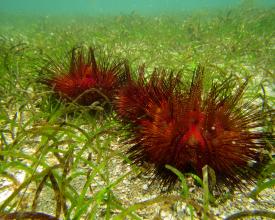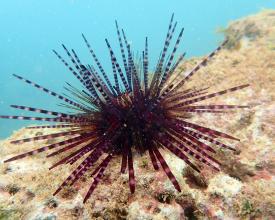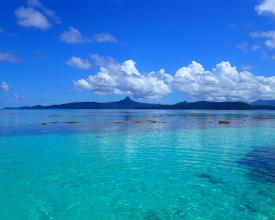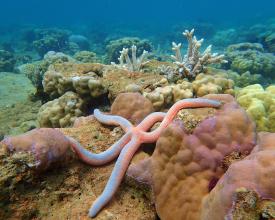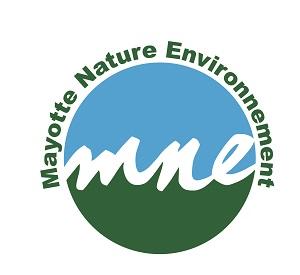
Study of Mayotte echinoderms and raising awareness
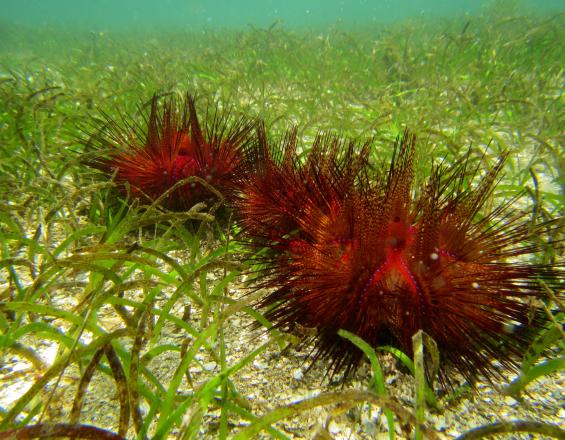
A complete, up-to-date and as exhaustive as possible inventory of the echinoderms of the overseas department of Mayotte was carried out using a multiple approach, including a bibliographic synthesis, exploration of the Muséum National d'Histoire Naturelle's dry collections, field campaigns and analysis of local underwater photographers' albums. Analysis of the Muséum's collections confirmed the low representation of Mayotte in the scientific corpus on echinoderms, and did not allow any additional taxon to be added to the list. Proposing to remove 8 probable false positives from the original inventory, a list of 163 echinoderms (including 72 new records) was drawn up, comprising 28 starfish, 8 crinoids, 37 sea urchins, 45 holothurians and 45 brittle stars. 42 species can be considered common or even very abundant on Mayotte, and therefore play an important ecological role on the island. 8 species on the IUCN red list were identified and monitored.
Context
Challenges addressed
The island of Mayotte is a fast-growing French overseas department and region, highly dependent on its lagoon for its economic and territorial development. The island therefore urgently needs to establish ecological benchmarks in the context of increasing anthropogenic pressure on its marine ecosystems, but also in anticipation of less rapid but nonetheless just as worrying changes in the regional climate, which pose a serious threat to the coral reefs that protect Mayotte's coastline. A better understanding of the population dynamics of the echinoderms that regulate these processes is vital for the survival of these reefs, and therefore for the survival of the human populations that depend on them. The populations of detritivorous animals (brittle stars, sea cucumbers) that keep lagoon waters clean are also of vital importance to human health and the local supply of animal protein.
Location
Process
Summary of the process
The first block, "elaboration of a complete, exhaustive and up-to-date inventory of echinoderms", enables the creation of a solid database, essential for the second block, "transmission of study results to the competent institutions and valorization"The aim is to popularize the information collected and raise awareness of the ecological value of echinoderms, with a view to guiding the sustainable management of marine ecosystems, and thus to achieve the "resolution of environmental issues associated with echinoderms", which constitutes the third block. Although these three blocks have been developed in the above chronological order, they can also be replicated individually in a different order, depending on the specific context of application.
Building Blocks
Drawing up a complete, exhaustive and up-to-date inventory of echinoderms
An inventory was drawn up through a bibliographical study, field research and photographic databases. Genetic analyses also completed the data.
Enabling factors
Success is the fruit of exhaustive, long-term work, carried out using a multifactorial, participatory approach.
Lesson learned
By cross-referencing all the data (bibliographic, photographic and field), some species were removed from the local inventory because they had been confused with local species, and others were discovered.
Transmission of study results to the relevant institutions and valorization
This stage enabled a set of action sheets to be drawn up for local managers and institutions (health services, customs, DEAL, Marine Park, etc.). In addition, the inventory was integrated into official databases, and abundance data were incorporated into the regional IUCN plan.
Enabling factors
A conference to present the results was offered to the general public. This component enabled us to put words and photographs to echinoderms that are still too little known, and thus to raise awareness among a public previously unaware of the richness of Mayotte's echinoderms and their importance.
Lesson learned
To broaden participation by the general public, it would have been desirable to include the creation of a visual exhibition in the project.
Inclusion of results in the scientific and administrative framework
The Mayotte echinoderm inventory project has enabled us to develop resource management proposals. It has also enabled the resolution of environmental issues associated with echinoderms, notably through :
- Participation in the revision of Mayotte's list of protected marine species.
- Collaboration to increase the number of holothurian species included in Appendix II of CITES (Convention on International Trade in Endangered Species of Wild Fauna and Flora).
- Drafting a report for the health services on venomous echinoderms in Mayotte, to improve nature/society interactions.
Enabling factors
This phase was made possible by the smooth running of the study phase, and therefore of the inventory of Mayotte's echinoderms. In addition, the researcher in charge of the study has a solid knowledge of the territory.
Lesson learned
The main lesson is to take this research a step further and exploit it for the benefit of the global scientific community, but also for local application.
Impacts
The essential basis for any protection program is a thorough knowledge of biodiversity, which can then be used as the basis for standards of good practice and legal rules to govern them. Several echinoderm species classified as threatened on the International Union for Conservation of Nature (IUCN) Red List have been recorded in Mayotte (with varying degrees of certainty to date). Their census is therefore crucial for conservation strategies - this need is explicitly mentioned in Mayotte's 2016 BEST (Biodiversity & EcoSystems in Territories) Ecosystem Profile. What's more, Mayotte is currently the territory in this part of the world where holothurian fishing remains the least intense (officially banned since 2004), thus allowing the survival of sometimes quite large populations of species that are completely extinct in neighboring countries: these relict populations are therefore of major importance in the long-term survival of their species. In-depth study of Mayotte's echinoderms has not only enabled them to be included in international species conservation and monitoring schemes, but has also raised awareness among decision-makers in charge of managing Mayotte's marine ecosystems.
Beneficiaries
Species identification can make a valuable contribution to the safety of all sea users, both professional and recreational, including the many anglers - a traditional activity of vital importance to part of the population.
Sustainable Development Goals
Story
A teacher-researcher specializing in echinoderms wanted to carry out a detailed, long-term inventory (3 years) of the many species present in Mayotte, in order to show their richness and diversity, both morphologically and functionally, for both scientific and awareness-raising purposes.This inventory, which will cover dangerous species, "useful" species and any species of commercial interest, will also provide important input for the scientific community concerned. This solution thus highlights three best practices aimed at raising awareness among decision-makers of the importance of echinoderms, with a view to helping improve the sustainable management of the marine ecosystems on which Mayotte depends for its development.
